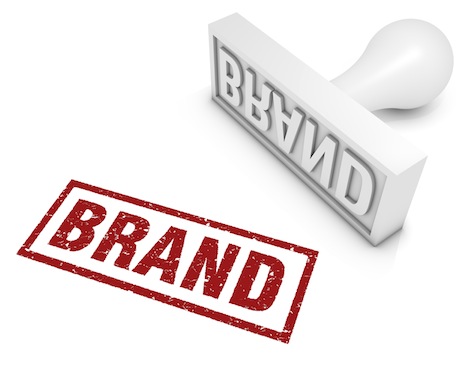A strong brand is essential to success—and possibly survival
Excerpted from an article that I originally wrote for The Voice of Chorus America way back in December 2008. It was later published at Sametz.com. Though times have changed, much about brand stays exactly the same…
In difficult economic times, a strong brand is no longer a luxury, or “nice-to-have” for cultural organizations—it’s a necessity.
Your brand, thoughtfully built and creatively managed, can help you to build and sustain meaningful relationships, increase recognition, and encourage participation––all critically important if you’re to grow and maintain the diverse income streams you need to support your activities and advance the mission of your chorus.
Given an increasingly cluttered landscape, growing competition for attention spans and entertainment and philanthropic dollars––all the more daunting given the current economic climate—a strong brand is vital if chorus leaders are to wrestle successfully with the challenges they face every day.
It’s not about a logo; it never was. Your brand is the amalgam of your organization’s mission, vision, attributes, and promises––and the expectations that your constituents have of you—transmitted through your offerings, communications, and behavior (and symbolized by your logo). And while
you can define your brand in your conference room, until ticket buyers, corporate sponsors, donors, and the media “get it,” it doesn’t exist.
Creating and sustaining meaningful relationships
A strong brand gives people a reason to believe in you that’s deeper and longer-lived than any specific offering. It can help communicate on an emotional level. Your brand can engender loyalty, create advocates and ambassadors, and, when needed, provide a margin for forgiveness.
To build these deep connections, choruses need to include constituents in their brand story, especially what constituents value. This means mining your people, both inside (singers, board, and staff) and outside the organization (audience, sponsors, supporters), to define the reasons why they are involved. While people are invariably involved for different reasons, these points of connection, taken together, can help you develop targeted, values-based messages and themes. The goal is to create and promulgate main messages that are at the inter-section of what your chorus does well and wants to advance––and what constituents care about and are willing to participate in and support.
At the Boston Symphony Orchestra, for instance, some care deeply about performances of music they’ve loved for years; others care about advancing new music; many care about keeping up Symphony Hall and the Tanglewood campus; some are passionate about educating kids and nurturing tomorrow’s musicians; for some the “way in” is civic pride or the social experience of going to Symphony. They’re all right, and the BSO brand is managed to ensure that different constituents
can connect to the organization in ways that are valuable to them—and participate in a shared vision.
Increasing recognition and participation
Most cultural organizations, even smaller ones, have a range of offerings and initiatives––staged concerts or productions, or educational programs within the larger community, for example––and different departments or board committees each with their own goals: marketing, development, sponsorship, press. Often, different efforts are named (and some think “branded”) with little reference to the parent organization. The result: 1) an organization gets less “credit” for its efforts than it has earned; 2) one’s brand image is more diffuse than it can afford to be; and 3) constituents have a hard time understanding the whole of the enterprise.
To remedy this, choruses should invest most of their energy into building their “master brand”; that is, the organization’s highest-level brand (in most cases, the name of your organization). You can’t afford to build a raft of offerings, initiatives, or names (especially non-self-explanatory ones) into meaningful, recognizable sub-brands—there is not enough time, money, or opportunity. You are best off selling from the top down (organization ––> offering). Investing at the highest brand level leverages limited communication resources and ensures that buzz and equity from a successful concert, great press, or a community initiative flow “up” to build the trust and loyalty that enables an organization to take risks––and build relationships. Brand-building at the organizational level changes the conversation. Among ticket buyers it can move from “what are my entertainment options Thursday night?” to “I wonder what’s going on at the Boston Center for the Arts.” It’s about becoming a trusted destination for a meaningful experience, and using communications––both visual and verbal––to position your brand as the carrier for this promise. And for performing arts organizations operating at the fringes of the traditional or contemporary, selling from the top down––creating institutional loyalty— is much more productive than promoting performers or composers whom your audience perhaps has never heard of.
But there are different aspects to most organizations, and a rigid iteration of one’s brand doesn’t easily fit all. To support the master brand and ensure resonance with different constituencies, choruses need to develop a “tiltable” visual and verbal brand-focused communications program. Much as different value-based messages both connect to different constituent groups and come together to support your main elevator message, a robust visual system needs to have volume and tone controls so that communications can be “tuned” for different audiences and initiatives––performances are not the same as classroom educational programs––while also building recognition of the master brand and organization. Marketing materials aimed at the under-30 audience need to look different than materials for planned giving; your website is not the same as a gala invitation. But if these communications share an approach to type, color, imagery, and design (but are marshaled as needed), they will help you to build cost-effective communications that do their tactical jobs well and work hard to build your brand.
Branding and the bottom line
Growing and sustaining diverse income streams––income from ticket and merchandise sales, grants, annual giving, major gifts, sponsorships, and more––is important if choruses are to grow and thrive. Relationships with key constituents need to be nurtured so they progress through a continuum from awareness to comprehension to participation to loyalty and, ultimately to advocacy and support.
Your brand, managed well, can help move people closer to you. Conversations can start at “square two” instead of “square zero” because your mission, vision, and promise are known before you make a call or meet a prospective donor. Loyal advocates form a large unpaid sales force. Prospective donors, faced with fewer philanthropic dollars to distribute, will give first to those organizations they know and trust––organizations whose values align with theirs. Potential corporate sponsors are looking both at your demographics and what you stand for. Are your brand attributes those that will burnish their brand? And prospective staff, foundations, and board members are looking at what you mean––not just what you do. A strong brand can influence all these groups to think and act in your favor. It can connect the “what” you do to a convincing “so what.” Strong brands build meaning, trust, and personal connection––without which trying economic times will be that much more difficult to navigate.






Leave a Reply